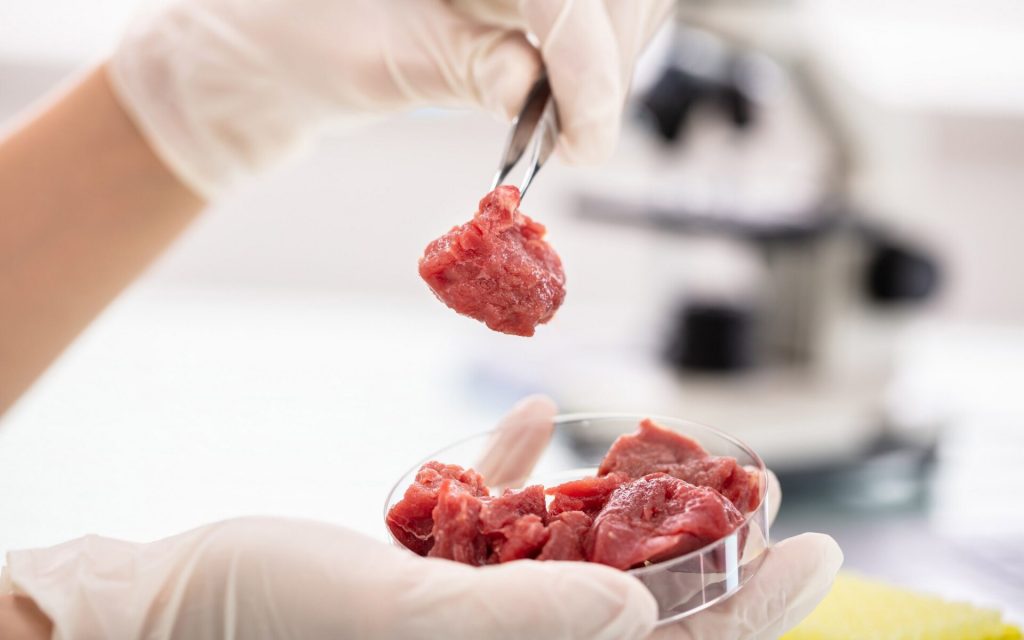Turns out lab-grown meat is not as green as we’d hoped. In fact, the emissions from cultured meat could be four to twenty-five times higher than natural beef! It’s obvious that raising livestock contributes to environmental harm like water consumption, feed production, and deforestation. But even if we switch to artificial meats, the mass production of them will likely still cause a huge carbon footprint.
Researchers from the University of California, Davis recently revealed their findings in a paper that was posted on bioRxiv. With current production methods, we’re talking about small-scale here – at a financial loss – but some firms have plans to increase the output soon. It will be interesting to see how they change up their strategies in light of this new revelation.
A recent study produced some somber news about near-term cell-based meat production. Apparently, if we use a highly developed growth medium, the environmental impact is likely to far exceed that of traditional beef production. It’s important to note, however, that this research must still go through peer review before its claims and findings can be accepted as fact. The Good Food Institute, an altruistic group that advocates replacing animal-sourced foodstuff with plant- and cell-based alternatives, disputed some of the study’s fundamentals, arguing that their conclusions didn’t reflect the sources and purification tactics used for cell culture media ingredients today… or tomorrow.
Lab-made meat stands apart from vegan-sourced products that copy the style and savor of genuine meat. Even though lab-produced meat is often seen as more ethical due to the non-necessity for animal death, some vegetarians and vegans do not indulge in it since it’s still derived from animal cells.
The creation of lab-grown meat requires the use of stem cells from an animal’s muscle and other organs. These cells are cultured in petri dishes with a growth media that contains nutrients, growth factors, and other proteins to aid in cell proliferation and growth. The cells eventually develop into muscle cells, which unite to make edible tissue.
Experts are predicting that in the near future, lab-made meat might become a staple on the menu. But in order to make this happen, production needs to be taken from tiny petri dishes to larger, high energy labs. Our research team worked hard, measuring the ingredients and electrical power needed for this process as well as that of regular beef production. The outcome? It looks like lab-grown meat requires a fair bit of energy! The boffins were looking into the number of molecules needed for synthesizing lab-made meat, such as sugar, proteins, vitamins, growth hormones, and table salt. Astonishingly enough, they figured out that one kilo of this type of victuals may contribute as much as 246 to 1,508 kg of CO2 equivalent to global warming– up to twenty-five times more than regular minced beef.

